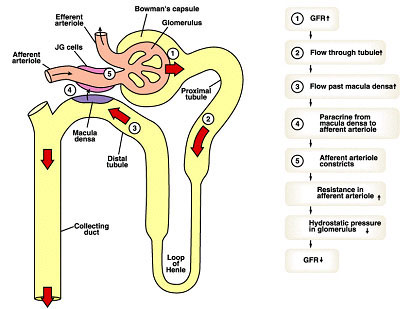Microglobulins refer to plasma globulins or globulin fragments with molecular mass less than 40 kDa, which are present in body fluids such as plasma and urine in extremely small but fairly constant amounts. Therefore, the change OF the corresponding microglobulin content in the detection of plasma and urine can be used to evaluate the function of relevant organs and to make the diagnosis and differential diagnosis of some diseases.
Urinary microglobulin can be divided into β2-microglobulin (β2-MG) and α1-microglobulin (α1-MG).
α1-microglobulin (α1-mg) is a glycoprotein with a molecular weight of 33kD. It is synthesized by human liver and lymphocytes and widely exists on the surface of various body fluids and lymphocyte membranes.
The free α1-MG in the blood can pass through the glomerular filtration membrane freely, 95%-99% of which is reabsorbed and metabolized in the proximal renal tubules, and only a small amount is excreted in the final urine. The bound α1-MG does not pass through the glomeruli and has zero concentration in the urine.
Under normal circumstances, urinary α1-microglobulin content is very small, when renal tubules are damaged, urinary α1-microglobulin secretion is increased. It can be seen that α1-microglobulin is an early diagnostic indicator of proximal convoluted tubule damage and an indicator of renal tubular insufficiency. Hipro Biotechnology offering wholesale microglobulin test kits to help doctors and patients make diagnosis of renal tubular injury, conttact us to order!
Urinary α1-MG elevation occurs when renal tubules are damaged, such as exposure to heavy metals and treatment with nephrotoxic drugs. Diabetes mellitus, hypertension secondary nephropathy; Upper urinary tract infection, renal proteinuria and hematuria.
In upper urinary tract infection, renal proteinuria and hematuria, urinary α1-MG increased significantly. On the contrary, urinary α1-MG did not increase significantly in patients with lower urinary tract infection, retrorenal hematuria and proteinuria.
β2-microglobulin (β2-MG) is a small molecule globulin produced by lymphocytes, platelets and polymorphonuclear leukocytes. It is a single chain polypeptide consisting of 99 amino acids with a molecular weight of 11800.

β2-MG can be freely filtered from glomeruli, 99.9% of which are absorbed in proximal renal tubules, and decomposed and destroyed in renal tubular epithelial cells. Therefore, the excretion of β2-MG is very small under normal circumstances.
The β2-MG concentration test kit for blood or urine provides an early, reliable and sensitive indicator for the clinical diagnosis of renal function, renal transplantation survival, diabetic nephropathy, heavy metal cadmium, mercury poisoning and some malignant tumors.
A. Serum β2-MG is A sensitive indicator of glomerular filtration function, and various primary or secondary glomerular lesions involving glomerular filtration function can lead to elevated serum β2-MG.
B. Serum β2-MG is a sensitive indicator of impaired renal function in hypertension and diabetes.
C. Elevated serum β2-MG is associated with the development of amyloidosis, amyloid osteoarthropathy and wrist syndrome in long-term hemodialysis patients.
D. Blood β2-MG is helpful for dynamic observation and diagnosis of early renal transplant rejection.
A. Blood β2-MG is A major marker of lymphoproliferative diseases, such as multiple myeloma, chronic lymphoid leukemia, etc., and the concentration of blood β2-MG increases significantly.
B. It can be used to evaluate the prognosis and treatment effect of myeloma.
α1-MG and β2-MG test can also be combined to make diagnosis, and Hipro Biotechnology offers a wide range of renal function test kits with good prices, welcome to get a guote.
① Combined test of α1-MG and β2-MG can improve the early diagnosis rate of renal injury in diabetic nephropathy.
② Combined test of serum and urine α1-MG and β2-MG can better reflect the severity of renal injury in patients with essential hypertension, which has important clinical application value for early diagnosis.
③ Combined test of serum α1-MG and β2-MG can be used as a sensitive, simple and reliable index for the diagnosis of early renal impairment in pregnancy induced hypertension, and can be used for long-term follow-up observation of renal impairment.
④ The combined test of α1-MG and β2-MG can detect neonatal asphyxia renal injury early and help to evaluate its severity.